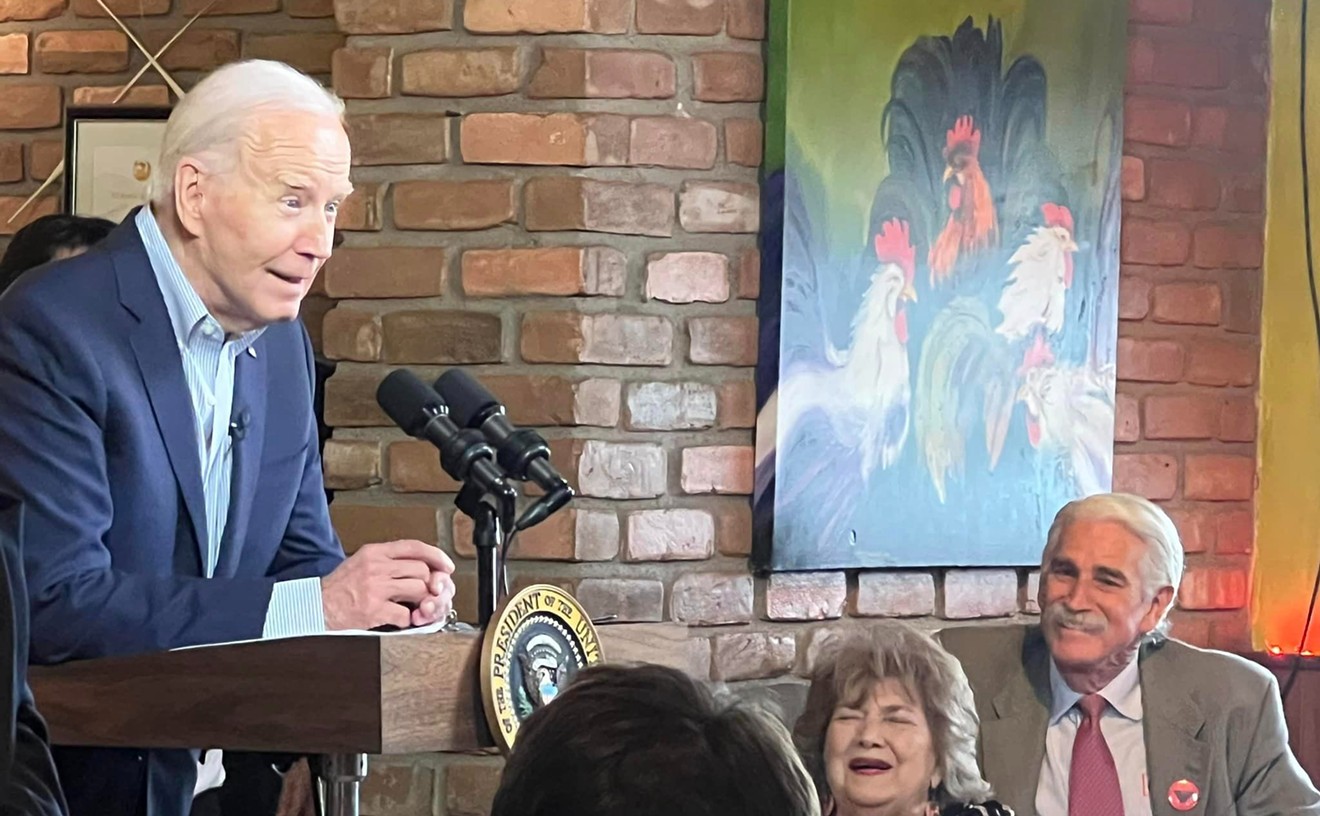The missive also questioned the scientific studies backing the wolf project, worrying that its target population--120 wolves--will be increased "if environmentalists and judges conspire to determine that the FWS was not sufficiently ambitious, as happened recently with the wolf reintroduction program the FWS had launched in Minnesota."
But experts say the Big Bad Wolf the governor fears is nonexistent.
There never was a wolf reintroduction program in Minnesota, for one thing. And the rest of Symington's argument also appears to be little more than huffing and puffing that hopes to blow the project down.
Fish and Wildlife hopes to have a final environmental impact statement on wolf reintroduction in the Southwest ready by next spring and, barring legal challenges, to release the first wolves by spring or summer of 1997.
One alternative in the draft environmental statement would put the wolves in the Blue Range Area, which straddles the Apache National Forest in Arizona and the Gila National Forest in New Mexico. The Arizona Game and Fish Commission has asked Fish and Wildlife to strongly consider starting the reintroduction experiment in the White Sands Missile Range in New Mexico before determining if it should consider the Blue Range as well.
In trying to make the case that placing wolves in Arizona would foster a rabies epidemic, Symington quoted a Phoenix neurologist named Peter Johnson, who theorized that Mexican wolves released in Arizona or New Mexico would make a run for the Mexican border, contract rabies while on a canine bender there, then return to Arizona and spread it.
Dr. Johnson, chairman of the Division of Neuropathology at Barrow Neurological Institute, was surprised to hear that the governor had quoted him, but stood by his prediction.
"This has been a historical threat that has terrorized humans since prehistoric times," he tells New Times.
"I feel this is a significiant hazard," he continues. "It's already been transmitted from the Mexican dog to the South Texas coyote."
But wolf biologists nearly howl when told of Johnson's statements.
"He may be very versed in viral diseases of the brain," says Dan Groebner of Game and Fish, "but obviously he's lacking experience in the behavior of wolves."
For one thing, Groebner maintains, Mexico is just too far away for the wolves to visit. Although they may range over territories 50 miles square, they are unlikely to make the 150-mile trip from their proposed range to the border--unless the trip is one-way.
"I think we'd be much more likely to find aliens on Earth," Groebner continues, "before we have a wolf disperse those distances he's talking about, pick up the disease and survive long enough to get back."
And Fish and Wildlife's David Parsons says that, despite folklore to the contrary, "rabies has never been a serious problem inthis country with wolves. Animals have to be fairly dense to have the kind of rabies spread that was described in the governor's letter. We're just not going to have that many wolves out there, and they will be distributed over the landscape."
In his letter, Symington cried wolf about other scientific aspects of the reintroduction project, as well. Among other things, he questioned the genetic viability of the breeding population used in the reintroduction program, noting that the initial wolves that will be released all share three common ancestors, a she-wolf and two males.
But Dr. Phil Hedrick, an ASU conservation biologist and geneticist, has conducted molecular studies that have turned up no major genetic defects among the project's wolves. Hedrick points out that in the near future, the breeding population will be augmented by other animals that have been genetically authenticated as Mexican gray wolves.
Fife's letter also complained about livestock depredation by wolves.
But Parsons counters: "We're saying that out of a base of 82,000 head of cattle on the entire Blue Range Area, at the most 34 would be taken [each year by wolves]."
As a further assurance to cattle growers, the project's wolves legally have been classified as a "nonessential experimental" population--rather than being placed in the more serious "threatened" or "endangered" categories. The experimental classification would allow a wolf to be removed or destroyed if it started killing livestock.
Symington claimed in his letter that if Fish and Wildlife changed the classification, it would "greatly impair land use in the Southwest."
Parsons, however, says that the governor is howling at the moon with that claim, as well.
"Even if we were compelled by a court to change the status from experimental to endangered, that does not necessarily mean that there would be land-use conflicts," he says. "All the wolves in Montana are endangered, and I don't know of any land-use restriction that has gone into effect there. Land-use restrictions have not been implemented in Minnesota with 2,000 threatened wolves roaming the state.










